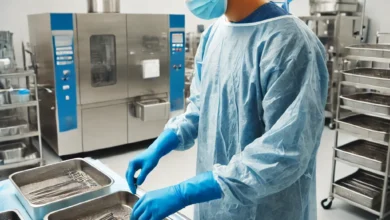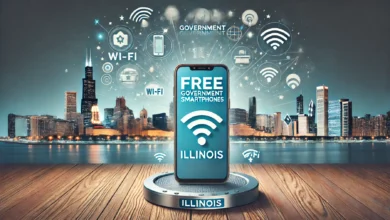
Introduction to Incorporating Cybersecurity into Medical Devices
Medical devices like heart monitors and insulin pumps save lives and make healthcare better. Many of these devices connect to the internet or hospital networks, which helps doctors monitor patients and improve care. But there is a challenge—these devices can be hacked.
Hackers can break into medical devices to steal patient data or even change how the devices work. This is why incorporating cybersecurity into medical devices is so important. It helps keep the devices safe, protects personal information, and ensures they work properly. Let us explore how this process works and why it matters.
1. What Are Medical Devices
Medical devices are tools doctors and patients use to monitor health or treat illnesses. Some devices are simple, like thermometers, while others are more advanced, like pacemakers.
Many modern medical devices connect to the internet. This allows doctors to check a patient’s condition remotely or update the device’s software. While this connection is helpful, it also makes the device vulnerable to cyberattacks.
2. Why Cybersecurity Matters for Medical Devices
Cybersecurity is about keeping devices and networks safe from hackers. For medical devices, this is even more important because they affect people’s health and lives.
If a hacker breaks into a medical device, they could change its settings or steal private health information. This could lead to serious problems for patients. Cybersecurity ensures the device works as it should and keeps sensitive data secure.
3. How Medical Devices Can Be Hacked
Hackers can attack medical devices in several ways. They might send harmful software, called malware, to disrupt how the device works.
Another method is stealing passwords to access the device remotely. Hackers can also break into hospital networks where many medical devices are connected. Understanding these risks helps in creating better security measures.
4. Steps to Incorporate Cybersecurity into Medical Devices
Incorporating cybersecurity into medical devices involves several important steps. First, manufacturers must design devices with security in mind.
This means using strong passwords, encryption, and software updates to protect the device. Regular testing is also needed to find and fix weaknesses. Doctors and hospitals must also follow safety guidelines to keep devices secure.
5. Using Encryption for Medical Device Security
Encryption is a way to protect information by turning it into a code. Only the right person with a special key can read the code.
For medical devices, encryption keeps patient data safe from hackers. For example, if a device sends information to a doctor, encryption ensures only the doctor can see it. This is a key part of cybersecurity for medical devices.
6. The Role of Software Updates in Cybersecurity
Software updates improve how devices work and fix security problems. For medical devices, these updates are essential.
Hackers often find new ways to attack devices. Updates close these gaps and keep the device protected. Patients and healthcare providers should always install updates as soon as they are available.
7. Training Healthcare Workers on Cybersecurity
Doctors, nurses, and hospital staff play an important role in keeping medical devices secure. Training helps them understand cybersecurity risks and how to avoid them.
For example, they can learn to recognize phishing emails that hackers use to steal passwords. They can also follow safety rules, like using strong passwords and securing networks. Education is a big part of incorporating cybersecurity into medical devices.
8. Building Strong Networks for Medical Devices
Medical devices often connect to hospital networks. These networks need to be secure to protect all the devices connected to them.
Using firewalls and monitoring tools helps keep hackers out. Hospitals should also use separate networks for medical devices to reduce risks. A strong network is like a shield that protects the devices from cyberattacks.
9. The Role of Governments in Cybersecurity for Medical Devices
Governments create rules and guidelines to make sure medical devices are safe. These rules require manufacturers to include security features in their devices.
For example, in some countries, devices must pass cybersecurity tests before they can be sold. Governments also work with hospitals and experts to improve security standards. These efforts make the entire healthcare system safer.
10. Challenges in Securing Medical Devices
Keeping medical devices secure is not easy. One challenge is that many devices are old and do not have built-in security features.
Another issue is that adding security can make devices more expensive. Balancing safety and cost is a big challenge for manufacturers and hospitals. Despite these challenges, cybersecurity is essential for protecting patients.
11. Cybersecurity for Wearable Medical Devices
Wearable devices like fitness trackers and smartwatches also need cybersecurity. These devices collect personal health data, which is valuable to hackers.
For example, a wearable heart monitor might send data to a smartphone app. Strong security measures, like encryption and regular updates, protect this data. As wearable devices become more popular, their security is more important than ever.
12. The Future of Cybersecurity in Medical Devices
The future of cybersecurity for medical devices is promising. New technologies like artificial intelligence can help detect and stop cyberattacks faster.
Manufacturers are also creating smarter devices with better built-in security. As technology improves, so will the safety of medical devices. Patients and healthcare providers can look forward to a safer digital world.
13. How Patients Can Stay Safe
Patients can take steps to protect their medical devices. Using strong passwords and keeping devices updated are simple but effective actions.
Patients should also ask their doctors about the security features of their devices. Being informed and proactive helps everyone stay safe.
14. Collaboration in Cybersecurity for Medical Devices
Incorporating cybersecurity into medical devices requires teamwork. Manufacturers, hospitals, governments, and patients all have a role to play.
By working together, these groups can create stronger security systems. Collaboration ensures medical devices are safe and reliable for everyone.
15. Why Cybersecurity is a Lifesaving Effort
Cybersecurity for medical devices is not just about protecting data. It is about saving lives. A secure device ensures patients get the right treatment without interruptions or risks.
Every effort to improve security makes healthcare safer and more effective. This is why incorporating cybersecurity into medical devices is a top priority.
Conclusion Understanding Cybersecurity in Medical Devices
Incorporating cybersecurity into medical devices is essential for protecting patients and their data. From encryption to software updates, every step improves safety and reliability.
While challenges exist, teamwork and new technologies are making progress. By staying informed and following best practices, we can ensure medical devices remain safe in a connected world.
FAQs About Incorporating Cybersecurity into Medical Devices
What is cybersecurity in medical devices
Cybersecurity in medical devices protects them from hackers and ensures they work correctly and safely.
Why is cybersecurity important for medical devices
It keeps patient data private, prevents cyberattacks, and ensures the device operates as intended.
How are medical devices protected from hackers
Devices are protected using encryption, software updates, and strong passwords. Secure networks and training also help.
What role do governments play in cybersecurity for medical devices
Governments create rules and standards to ensure medical devices are safe and secure before being used.
Can patients help keep medical devices secure
Yes, patients can use strong passwords, install updates, and ask their doctors about security features.
What is the future of cybersecurity in medical devices
The future includes smarter devices, artificial intelligence, and stronger collaboration to improve safety.

